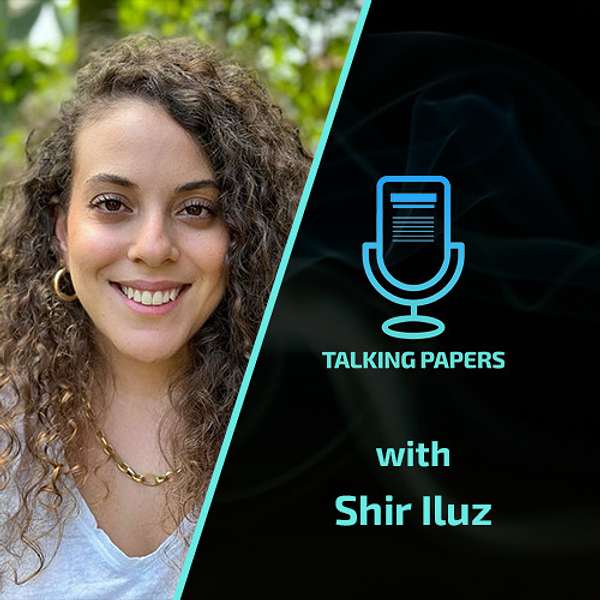
Talking Papers Podcast
🎙️ Welcome to the Talking Papers Podcast: Where Research Meets Conversation 🌟
Are you ready to explore the fascinating world of cutting-edge research in computer vision, machine learning, artificial intelligence, graphics, and beyond? Join us on this podcast by researchers, for researchers, as we venture into the heart of groundbreaking academic papers.
At Talking Papers, we've reimagined the way research is shared. In each episode, we engage in insightful discussions with the main authors of academic papers, offering you a unique opportunity to dive deep into the minds behind the innovation.
📚 Structure That Resembles a Paper 📝
Just like a well-structured research paper, each episode takes you on a journey through the academic landscape. We provide a concise TL;DR (abstract) to set the stage, followed by a thorough exploration of related work, approach, results, conclusions, and a peek into future work.
🔍 Peer Review Unveiled: "What Did Reviewer 2 Say?" 📢
But that's not all! We bring you an exclusive bonus section where authors candidly share their experiences in the peer review process. Discover the insights, challenges, and triumphs behind the scenes of academic publishing.
🚀 Join the Conversation 💬
Whether you're a seasoned researcher or an enthusiast eager to explore the frontiers of knowledge, Talking Papers Podcast is your gateway to in-depth, engaging discussions with the experts shaping the future of technology and science.
🎧 Tune In and Stay Informed 🌐
Don't miss out on the latest in research and innovation.
Subscribe and stay tuned for our enlightening episodes. Welcome to the future of research dissemination – welcome to Talking Papers Podcast!
Enjoy the journey! 🌠
#TalkingPapersPodcast #ResearchDissemination #AcademicInsights
Talking Papers Podcast
Word-As-Image - Shir Iluz
All links are available in this blog post
Welcome to another exciting episode of the Talking Papers Podcast! In this installment, I had the pleasure of hosting Shir Iluz to discuss her groundbreaking paper titled "Word-As-Image for Semantic Typography" which won the SIGGRAPH 2023 Honorable Mention award.
This scientific paper introduces an innovative approach for text morphing based on semantic context. Using bezier curves with control points, a rasterizer, and a vector diffusion model, the authors transform words like "bunny" into captivating bunny-shaped letters. Their optimization-based method accurately conveys the word's meaning. They address the readability-semantic balance with multiple loss functions, serving as "control knobs" for users to fine-tune results. The paper's compelling results are showcased in an impressive demo. Don't miss it!
Their work carries immense potential, promising to revolutionize the creative processes of artists and designers. Rather than commencing from a traditional blank canvas or plain font, this innovative approach enables individuals to initiate their logo design journey by transforming a word into a captivating image. The implications of this novel technique hold the power to reshape the very workflow of artistic expression, opening up exciting new possibilities for visual communication and design aesthetics.
I am eagerly anticipating the next set of papers she will sketch out (pun intended).
AUTHORS
Shir Iluz, Yael Vinker, Amir Hertz, Daniel Berio, Daniel Cohen-Or, Ariel Shamir
ABSTRACT
A word-as-image is a semantic typography technique where a word illustration presents a visualization of the meaning of the word, while also preserving its readability. We present a method to create word-as-image illustrations automatically. This task is highly challenging as it requires semantic understanding of the word and a creative idea of where and how to depict these semantics in a visually pleasing and legible manner. We rely on the remarkable ability of recent large pretrained language-vision models to distill textual concepts visually. We target simple, concise, black-and-white designs that convey the semantics clearly. We deliberately do not change the color or texture of the letters and do not use embellishments. Our method optimizes the outline of each letter to convey the desired concept, guided by a pretrained Stable Diffusion model. We incorporate additional loss terms to ensure the legibility of the text and the preservation of the style of the font. We show high quality and engaging results on numerous examples and compare to alternative techniques.
RELATED PAPERS
📚VectorFusion
LINKS AND RESOURCES
📚 Paper
💻 Project page
💻 Code
💻 Demo
CONTACT
If you would like to be a guest, sponsor or just share your thoughts, feel free to reach out via email: talking.papers.podcast@gmail.com
🎧Subscribe on your favourite podcast app: https://talking.papers.podcast.itzikbs.com
📧Subscribe to our mailing list: http://eepurl.com/hRznqb
🐦Follow us on Twitter: https://twitter.com/talking_papers
🎥YouTube Channel: https://bit.ly/3eQOgwP
